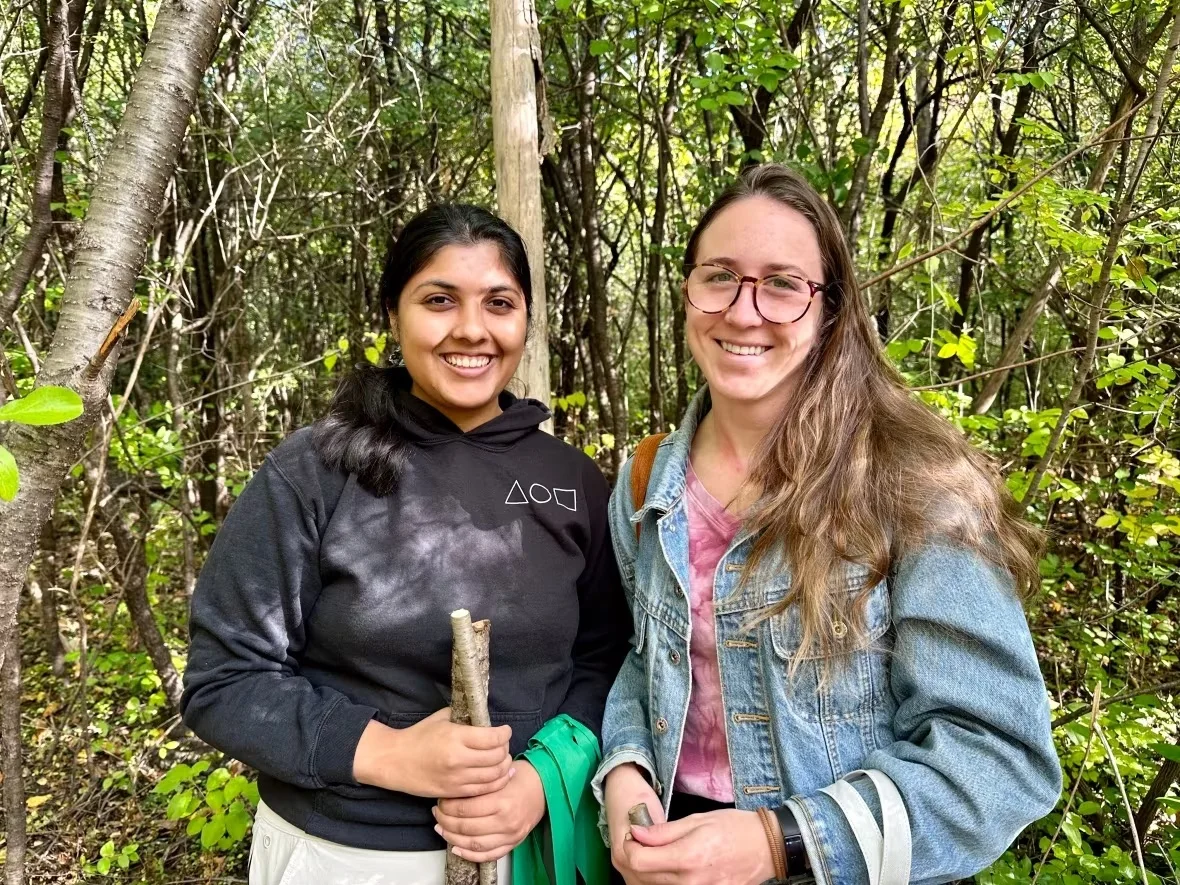
Conservation group, woodworkers find second life for invasive tree
An unwanted visitor has taken root in a large forested area in Ottawa's west end, and the conservation group that helps care for the area is developing creative solutions to get rid of it.
Common buckthorn, a tree species native to Europe, has arrived in local forests, including Ottawa's Carlington Woods.
Once it's in, it's difficult to remove.
SEE ALSO: Why a 'tree's job isn't done' after a storm brings it down
The invasive and noxious plant can be found from roadsides and fence lines to forests and fields in areas from Nova Scotia to Saskatchewan, according to the Invasive Species Centre, a group that works to prevent the introduction and spread of invasive species across Canada.
"It reproduces very aggressively and it grows prolifically," said Derissa Vincentini, the centre's community science co-ordinator.
"It also has allelopathic characteristics, which means it releases chemicals into the soil which can inhibit the growth of other plants, including our native tree regeneration."
The plant's berries are also popular with birds, Vincentini said, but because the fruit provides no nutritional value, birds excrete them quickly and spread the seeds.
Buckthorn grows well in shade and drops its leaves later than other trees, so it's able to spread under the canopy and steal sunshine from native plants, she said.

Dani Berno and Nupur Agrawal are masters of architecture and plan to use the Buckthorn wood for their models. (Natalia Goodwin/CBC)
Recycling the wood
Friends of Carlington Woods has seen first-hand the impact of the invasive species on the land it helps protect.
In 2022, the group did its first big removal of buckthorn and posted on social media looking for someone to take the plant. At the time, it couldn't find any takers.
But this year, the group partnered with the Ottawa Tool Library to get word out to a new social media crowd.
On Saturday, volunteers helped give the buckthorn away to interested woodworkers.
"I don't want to see it go to waste. I don't think it's a good philosophy for any stewardship or conservation group to adopt. Let's not waste anything, even if it's not meant to be here," said Sharon Boddy, director of Friends of Carlington Woods.
WATCH:Hogweed has some look-alikes; How to identify these dangerous plants
"So I'm really, really excited to see what people may do with this. It makes me want to clear even more of it and larger specimens so people can do even greater things with it."
Boddy said Buckthorn is a hardwood with a natural orange finish, making it perfect for creative projects.
Some of the first people she met on Saturday were making shoehorns and canes. She also met someone from a community housing group who planned to do woodworking projects with residents. Others were making toys, bowls and furniture.
Dani Berno and Nupur Agrawal are taking master's degrees in architecture, and came to pick up some buckthorn.
"I was hoping to use it for my architecture thesis. I'm working on like architecture and mental health, and I figured I could make a few models using like a little bit of wood," Berno said.
Agrawal said it's good for her budget — without it, she would have to purchase expensive wood. It's also helping her reach a goal of her program.
"We're always taught about getting more sustainable resources, so getting one that's an invasive one that would otherwise be discarded is a great repurpose."
Friends of Carlington Woods said it plans to continue culling the buckthorn, giving it away and planting native species in its place.
WATCH: New invasive fish species found in Quebec lake
Thumbnail courtesy of Natalia Goodwin/CBC.
The story was written by Natalia Goodwin and published for CBC News.









